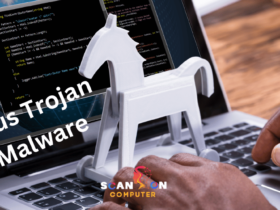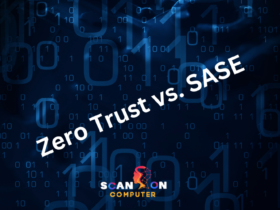Password spraying attacks can be especially devastating to single sign-on and federated authentication applications, leading to multiple accounts and assets being compromised quickly.
Many businesses implement password policies to encourage employees to follow best practices and use longer, complex passwords. If users ignore those guidelines by choosing words with common phrases as their passwords, cybercriminals could gain entry through password spray attacks and gain entry.
What Is Password Spraying?
Password spraying is a type of brute force cyberattack in which attackers test numerous passwords against multiple accounts in an effort to identify those which will likely succeed and thus reduce account lockout risks by limiting password attempts, as well as being less labor intensive than other forms of brute force attacks.
Hackers use lists of common passwords and usernames to carry out password spray attacks, often found online or retrieved from previous data breaches. Such lists of user credentials, known as credential files, can then be purchased or obtained by fraudsters to use against targets in attacks.
Though password spraying attacks may be prevalent, they can be avoided with cybersecurity best practices and technology that remove attackers’ ability to exploit password behavior. Varonis helps organizations monitor and secure sensitive data with behavior-based threat models that detect early signs of compromise like abnormal access patterns and excessive account lockouts – all while providing human-readable audit trails for compliance reporting purposes.
How a Password Spraying Attack Is Conducted?
Cybercriminals employ password spraying as a technique for illegally accessing user accounts, quickly exploiting them for profit. By repeatedly guessing large volumes of passwords simultaneously in hopes that one might work successfully, cybercriminals hope to gain illegal entry to one user account which they can use to gather intelligence or gain entry to deeper networks or gain privileged access.
Password spraying attacks are difficult to detect due to their large volume of login attempts and don’t trigger account lockout thresholds like other forms of fraud; as a result, they often blend into background noise of regular user activity without raising red flags.
Since users tend to select easy passwords, educating consumers on the risks of password spraying and encouraging them to utilize strong passwords with MFA can help thwart this type of attack. Furthermore, monitoring all login attempts for anomalous behaviors like increased velocity can also reduce their effectiveness; systems configured with alert mechanisms could even alert on such suspicious activities!
Signs of a Password Spraying Attack
Password spraying attacks are more difficult to spot than brute force or credential stuffing attacks, due to cybercriminals’ tendency to conduct it at an extremely low rate, enabling them to avoid IT teams’ account lockout thresholds and software solutions’ software solutions; in addition, this method also hides it from security logging tools that typically only register multiple failed login attempts within a short period as suspicious activity.
Cybercriminals frequently employ lists of commonly used passwords or default passwords that are freely accessible online – which they obtain either through social media sites, other hackers, or third parties with stolen credentials – in order to bypass security measures designed to detect brute force attacks.
Therefore, IT and fraud teams must closely observe any unusual login attempts, as well as implement a fraud prevention solution which integrates risk assessments with challenges. Arkose Labs uses continuous feedback loops and machine learning technology to reduce challenge rates for good users without diminishing customer experiences.
How a Password Spraying Attack Affects Customer?
Cyberattacks of any sort can have devastating repercussions for business operations, from password spraying attacks that expose customer data and compromise accounts to those which disrupt productivity by forcing businesses to investigate and address an attack in real time.
Hackers are able to attack specific user accounts using lists of commonly or default passwords, which are readily available. Such lists may be found through various reports or studies or published on Wikipedia; attackers also commonly employ local references like sports team names or landmarks in an effort to guess passwords more quickly.
Businesses must put into place a security incident response plan that includes detection of failed login attempts. This is one way of guarding against password spraying attacks which use repeated unsuccessful authentication failures from one IP address in short succession to gain entry to user accounts, systems and applications. IT teams should keep an eye out for multiple unsuccessful authentication failures from that IP within short intervals to detect evidence of this practice.
How to Defend Against Password Spraying Attacks?
Deterring password spraying attacks begins with educating users on best practices for creating strong, unique passwords containing upper and lower case letters, numbers, and symbols – such as mandating multi-factor authentication (MFA).
To launch an attack, attackers must acquire a list of username credentials either through open source intelligence or purchasing a company directory. After having this list in hand, attackers can use it to attempt logins until one account gives them unwarranted access.
As soon as they gain entry, attackers can use the compromised account for internal reconnaissance, target deeper systems and steal sensitive information such as IP addresses, user names and passwords – something particularly concerning if it belongs to a system administrator.
IT teams can protect against attacks by enforcing strong password policies, enabling multifactor authentication (MFA), and installing robust security logging platforms to detect login attempts from single hosts within short windows of time. In addition, password creation policies should require users to choose passwords which aren’t popular with everyone else.
1. Login Detection
As its name implies, password spraying attacks involve trying out multiple username and password combinations for an account in an effort to find one that will gain entry and allow unauthorized hackers to gain entry and gain access to it – potentially leading to financial loss for both yourself and your customers.
Login detection can provide an effective means of protecting against password spraying attacks. A security solution like Varonis utilizes behavior-based threat models to recognize early signs of password spraying such as excessive access to sensitive data or multiple account lockouts; alerts generated from this behavior can then trigger automated responses such as ending sessions and changing passwords – an approach which may stop an attack in its tracks.
Multi-factor authentication (MFA), can help ward off attacks. By adding another factor such as mobile device or hardware verification to confirm identity, MFA makes hacker attacks far harder to implement.
2. Stronger Lockout Policies
Password spray attacks take advantage of users who reuse weak and easy-to-guess passwords across various online systems – particularly since 65% do so frequently! Hackers see these accounts as easy targets.
Password spraying differs from brute force attacks in that it uses only common passwords to test account access. This makes it much simpler for attackers to bypass security protocols that limit how often a user can fail login attempts before being locked out of their accounts.
Businesses should ensure their authentication solutions can detect and block this type of attack. A robust solution should be capable of flagging password spraying in audit logs by setting off risk alerts when custom thresholds (such as attempted bad passwords per hour or extranet lockouts) are exceeded, while providing features such as searchable UI to help identify timing and IP addresses of attackers so business leaders can determine when an attack began and take appropriate actions against it.
3. Enforcing Strong Passwords
Education on password spraying and other cyber attacks as well as creating strong passwords is an effective way to reduce these risks. Many systems and applications already include functionality to prevent users from creating passwords that do not meet specific criteria, so companies can leverage this feature to ensure employees use strong passwords.
Organisations can further mitigate these threats by implementing multi-factor authentication (MFA). MFA helps deter hackers from employing this attack method by requiring another form of identification before authorizing credentials from one set to be presented for approval.
MFA provides businesses with an efficient means to detect and respond to suspicious activities, including password spraying attacks. This protects businesses against fraud while also making sure good customers don’t experience unnecessarily challenging interactions. For more information about preventing and defending against this common threat, check out Arkose Labs guide on MFA or contact us now to begin using MFA at your organization!










Leave a Reply
View Comments